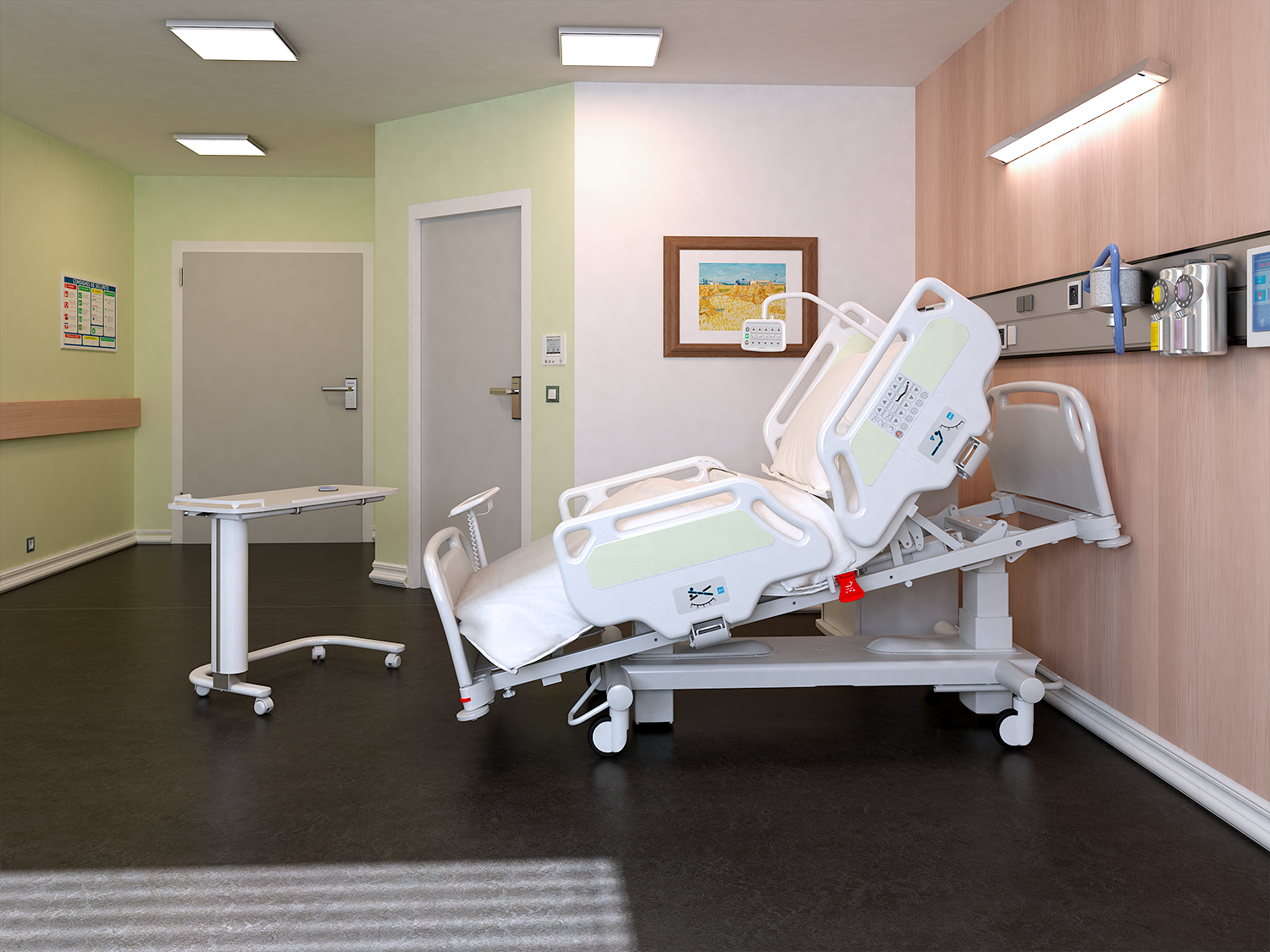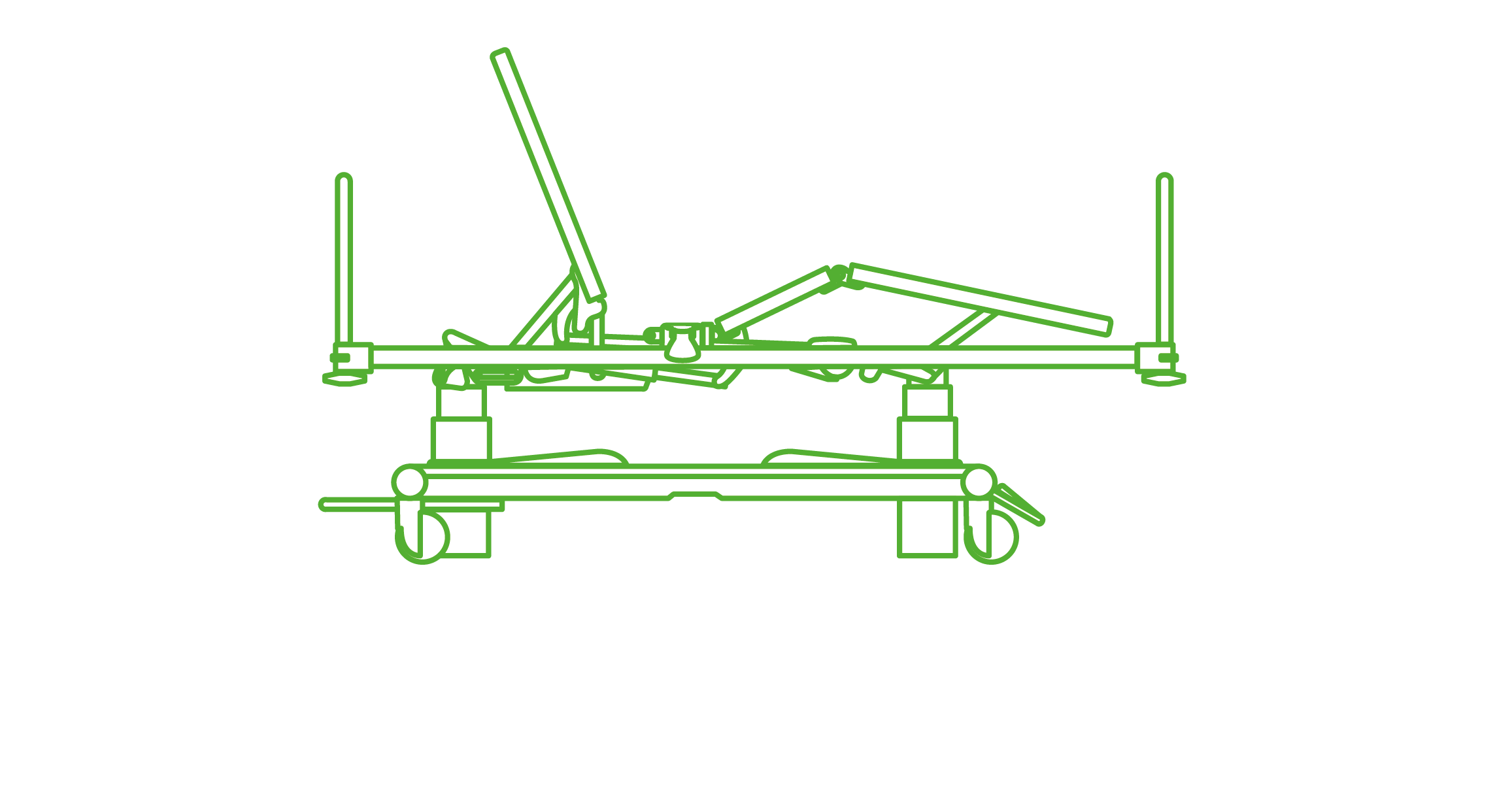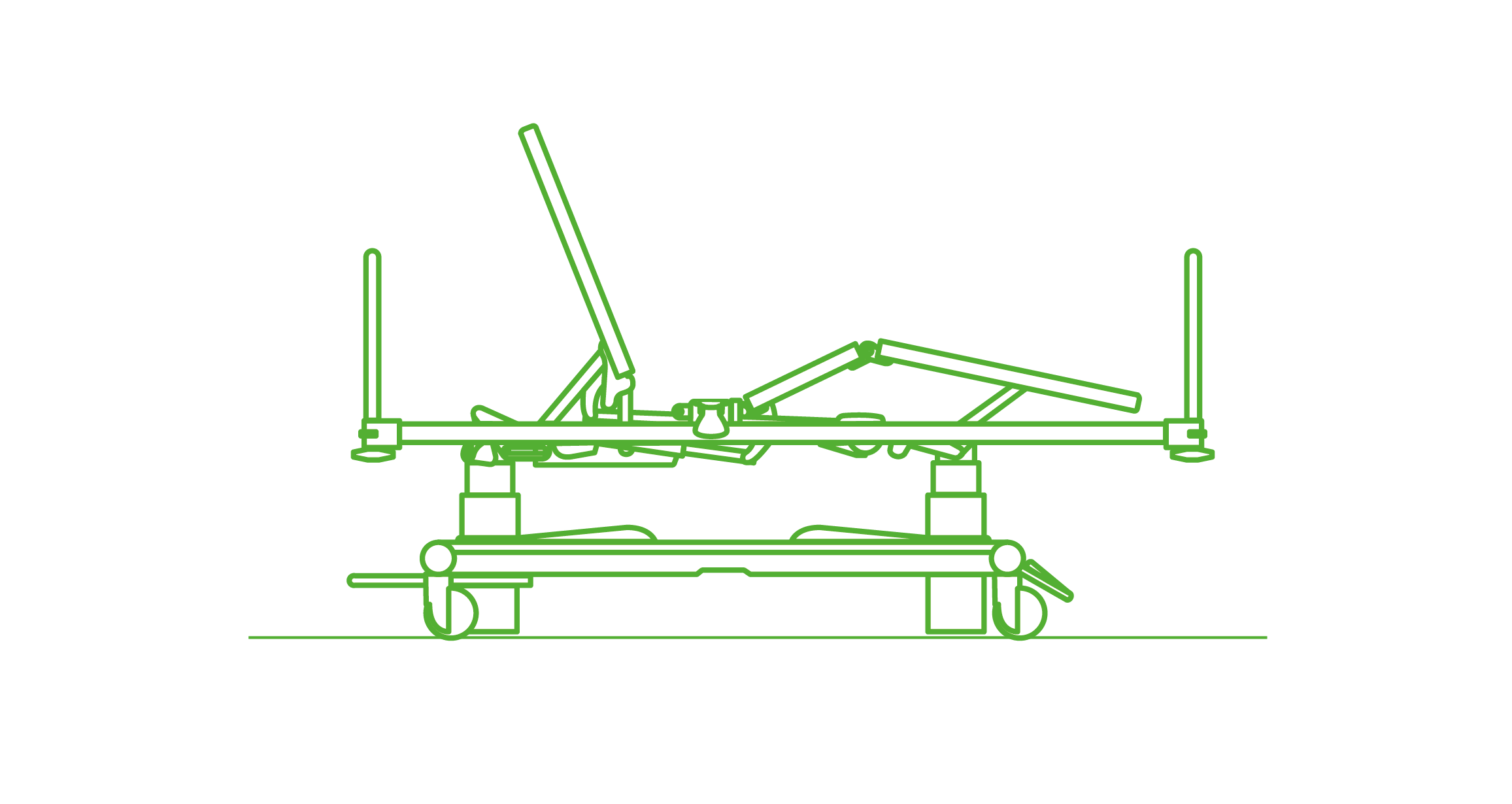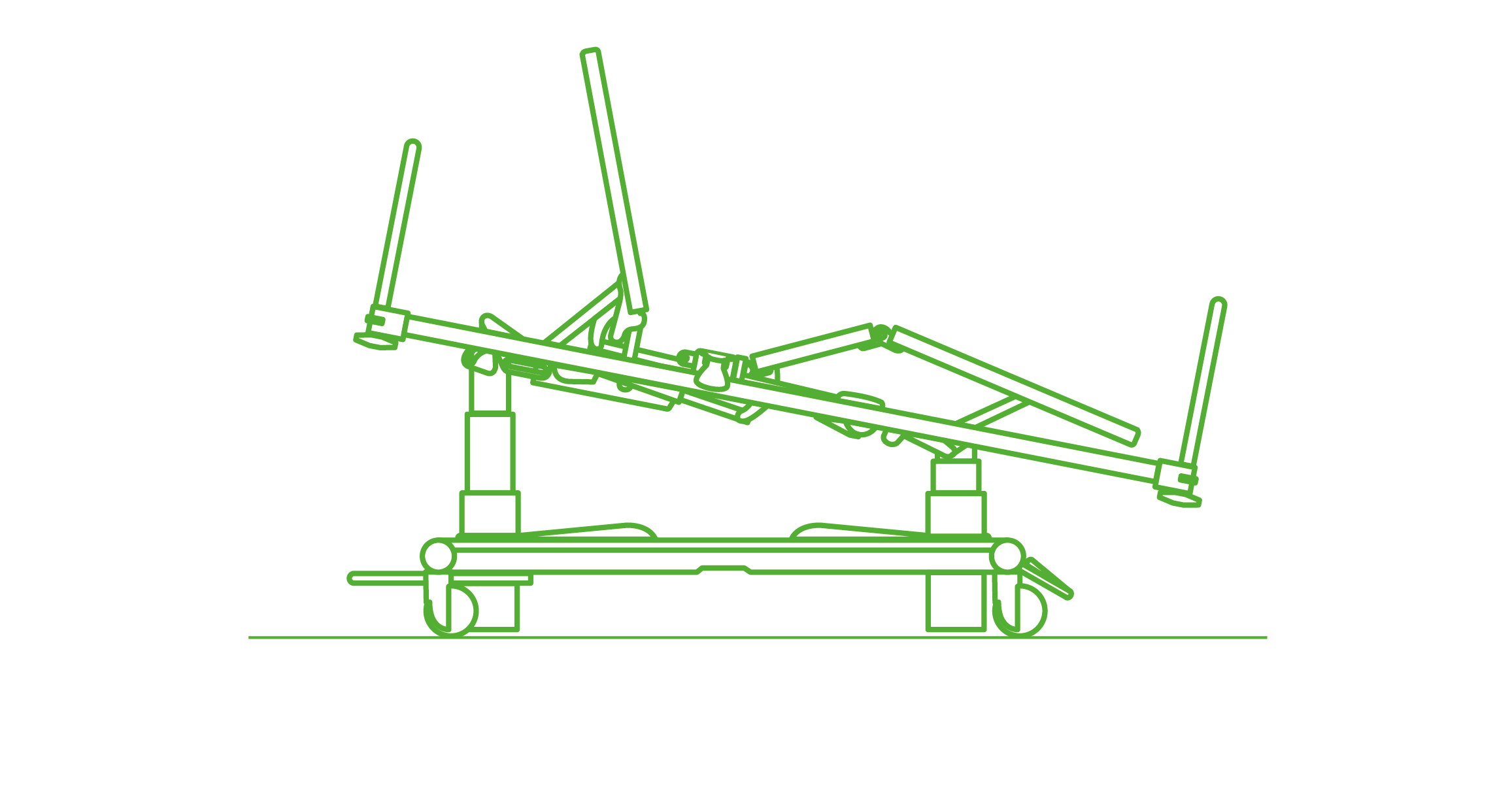
Twin Bed
TECHNICAL SPECIFICATIONS
Minimum height
430 mm
Maximum height
830 mm
Maximum declive-proclive adjustment
20°
Maximum backrest adjustment
70°
Bust succession translation
120 mm
Weight
130 kg
Maximum capacity
220 kg
Supply voltage
200 V – 50 Hz
Voltage in use
24 VCC
IP protection rating
IP X4
Useful surface of sleeping
2000 x 900 mm
Electric class
1B

Low position
43 cm to secure the patient

High position
83 cm to carry out the care

Declive position
to reposition the patient in bed in case of emergency

Fowler Position
to relieve pressure points in case of prolonged bed rest

Armchair Position
for the well-being of the patient through a change of compression points
Do you have a project for your hospital?

